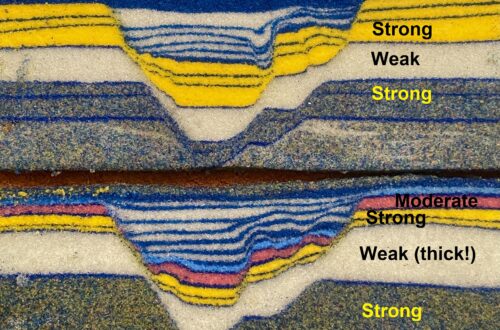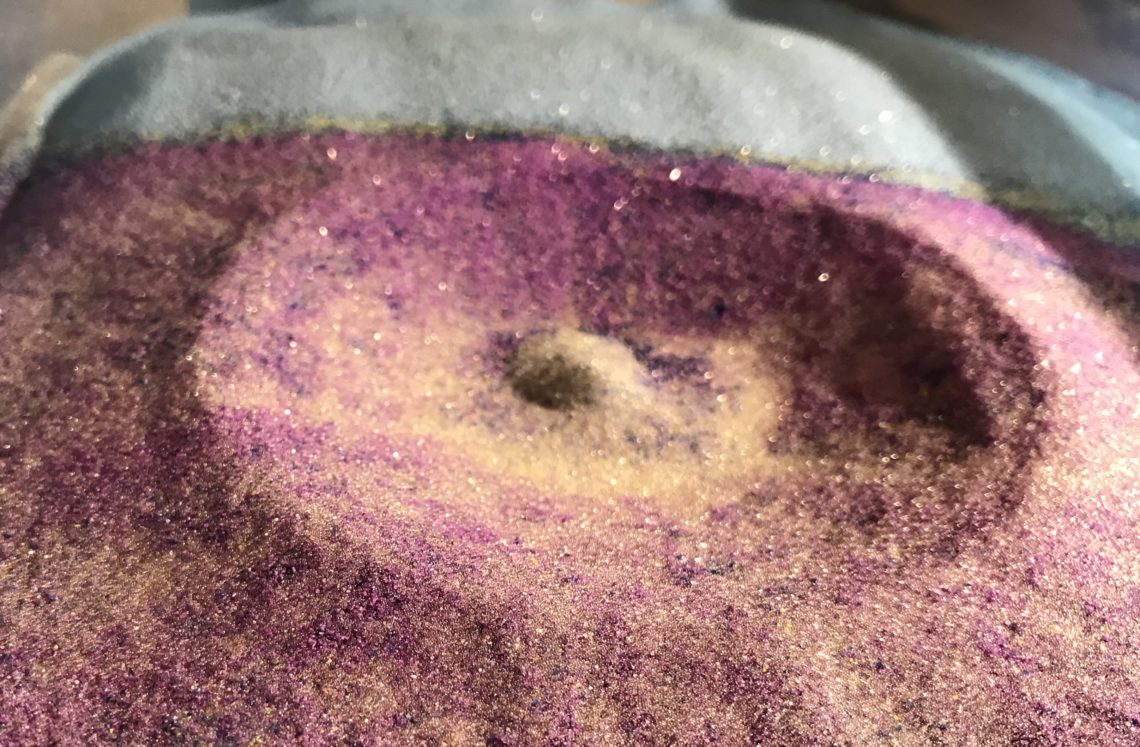
Central peak formation in model impact craters
Philip S. Prince
Numerous solid planets and moons in our solar system (our own planet included) host impact craters with conspicuous central peak structures. Lunar crater Tycho, shown below, is a nice example (image sourced here). Central peaks are thought to result from the convergence of inward-collapsing material temporarily forced outward by the impactor, combined with localized unloading of the deeper horizons of the impacted material (see this link). This process can be thought of as the displaced, disaggregated material moving to re-establish equilibrium with gravity, as the walls of the transient crater that forms soon after impact are far too steep to remain stable.
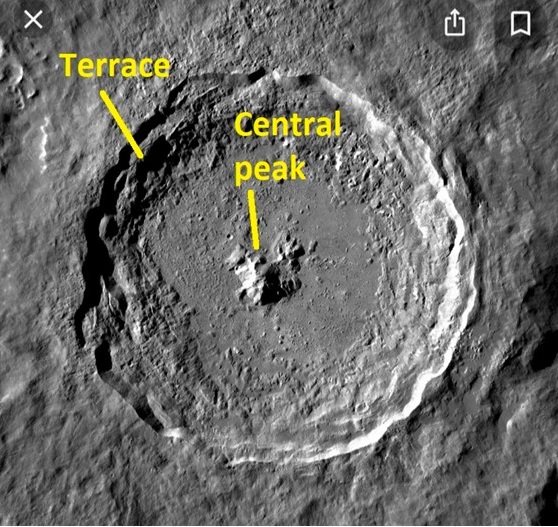
I produced the model impact crater shown below with a combination of the same granular materials I use for tectonic models and a projectile fired from a powerful air rifle (a city-safe version of Gene Shoemaker’s approach at 17:00 in this link). The model crater developed a nice central peak as well as terraced margins. The darker material is quartz sand, combined with a small amount of cornmeal to produce a minor amount of cohesion between sand grains. The white material comprising the central peak is glass microbeads.
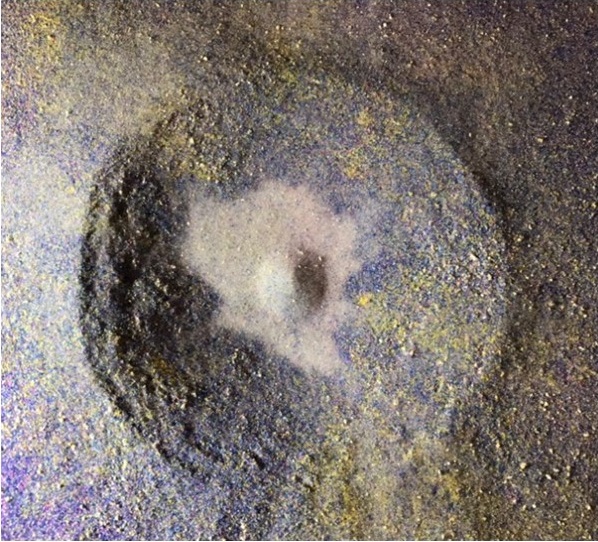
The GIF below shows the formation sequence of the model (a YouTube video is linked at the end of the post). The central peak is not unlike a “splash” of granular material that develops as material displaced by the impact collapses back into the crater void. When frictional contact is disrupted by the accelerations and void produced by the impact, the material is significantly weakened and temporarily behaves more like a fluid moving to re-establish gravitational equilibrium. The base of the early crater void (or transient cavity) is also unloaded with respect to the surrounding intact layer pack, and some of the initial peak growth may result from in-place material being pushed inward and upward by the surrounding load.
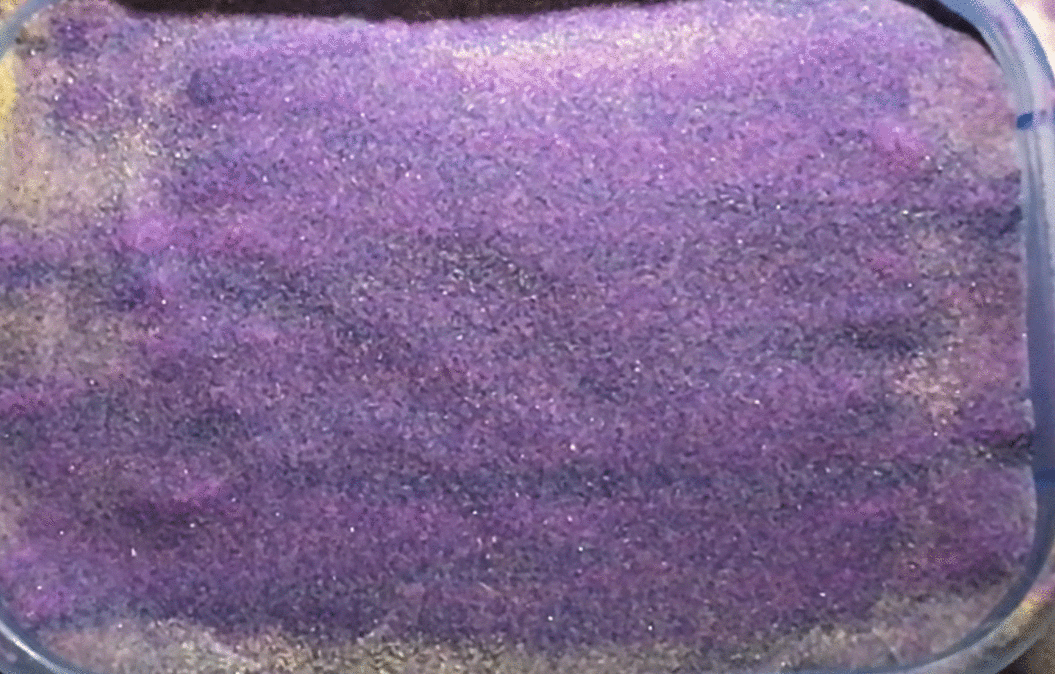
An interesting detail of this model is the temporary (transient) height and shape of the central peak. Its shadow reveals that it attains a very tall, narrow, and definitely splash-like geometry before collapsing to the angle of repose of the granular material (glass microbeads). The frame below shows the central peak at it maximum height and associated highly unstable shape. Ejecta is still spreading outwards at this point in the experiment.
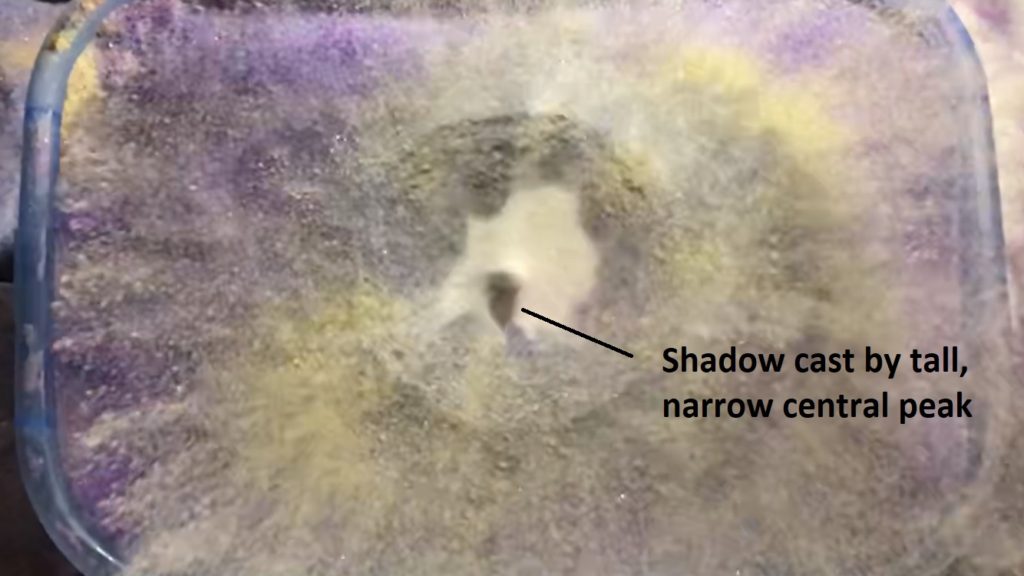
The final, stable central peak is much shorter and wider, with its geometry reflecting the frictional strength of the microbeads.
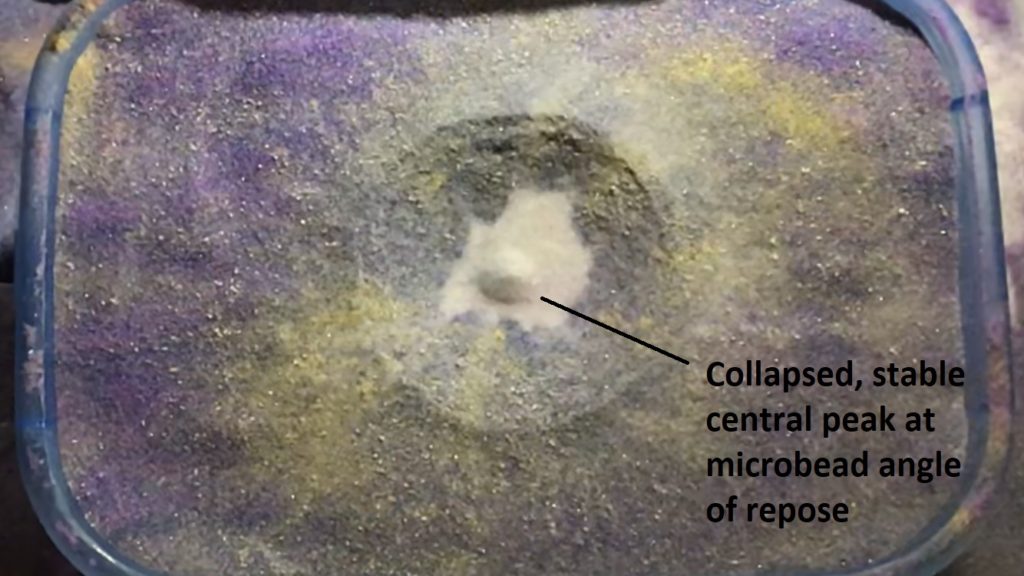
The peak is only a fraction of the height of the inner crater wall.
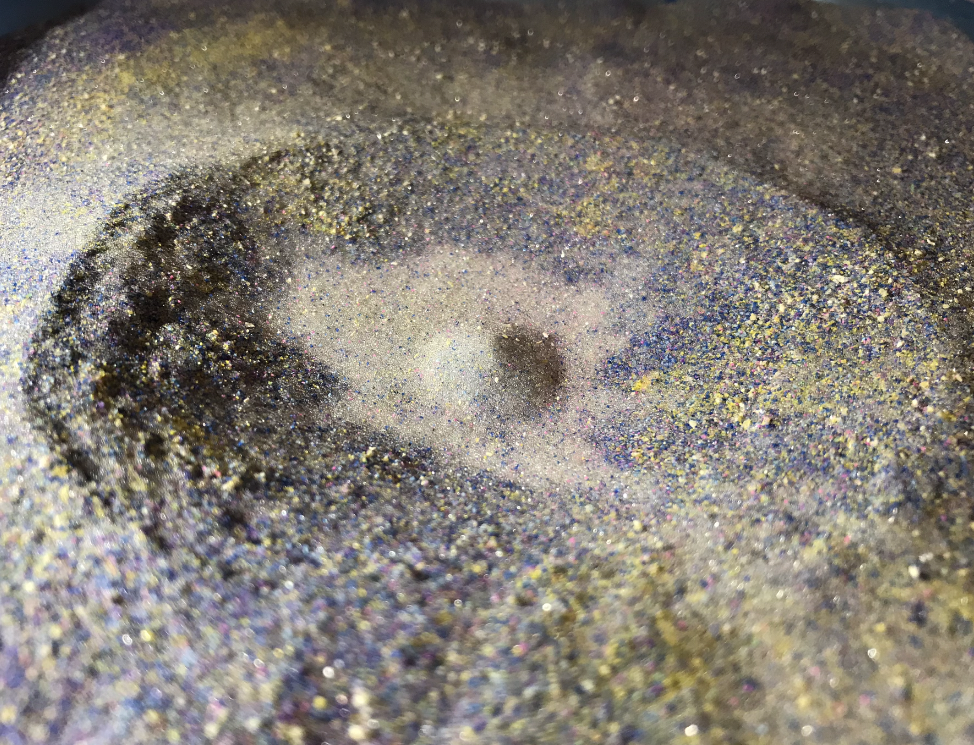
Central peaks are composed of material derived from deeper below the surface than their surroundings. The following set of images shows a deeper gray layer beneath the white microbeads that is brought to the surface in the central peak. Because these models rely on material properties to produce the central peaks, the introduction of too much colored sand into the microbead zone will prevent peak formation.
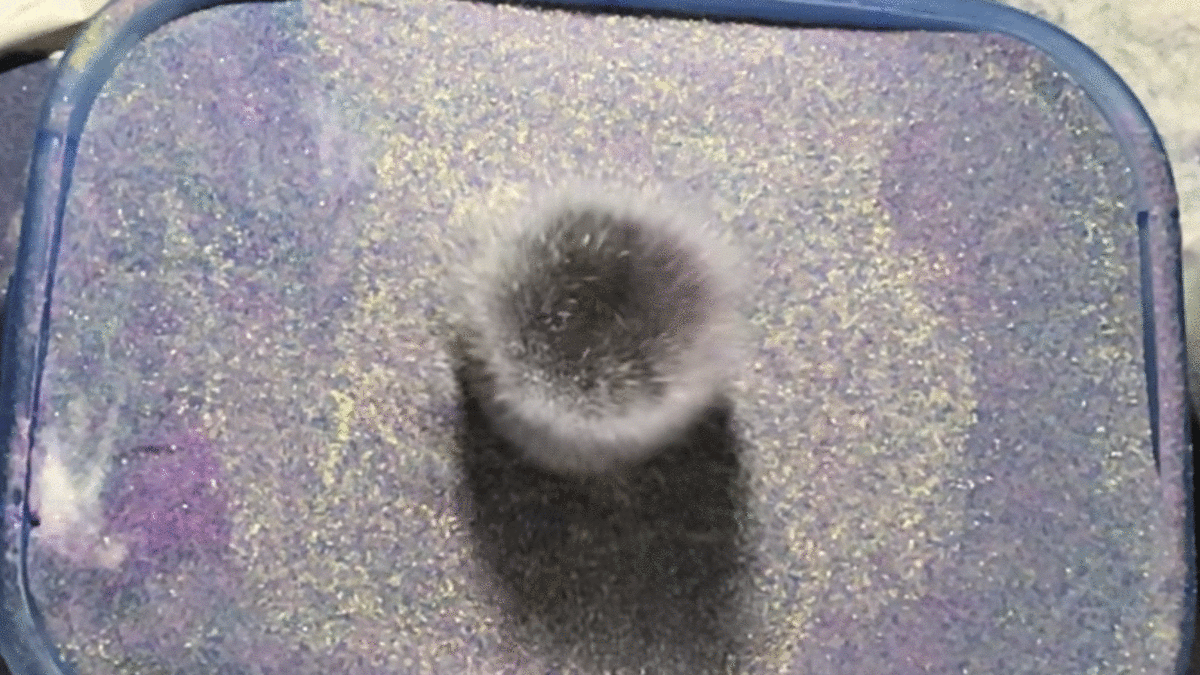
The models shown above were produced with a nearly vertical impact. The material that produces the central peaks in these models tends to rise in the direction of impactor origin. A more angled impact produced a slightly off-center, elongated peak.
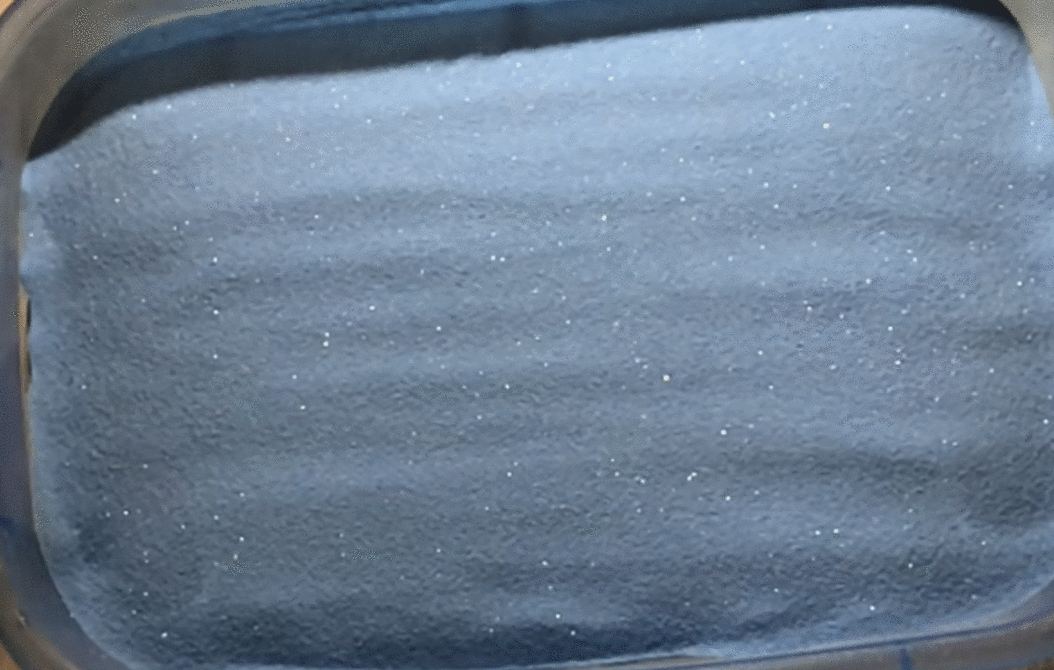
In this case, the central peak material, from deeper in the layer pack, ends up on top of younger material (purple) that slumps in from the crater walls. The image below is oriented as if looking from right to left in the GIF above. This experiment also produced nice terraces, one of which is highlighted by shadowing (right side of crater).
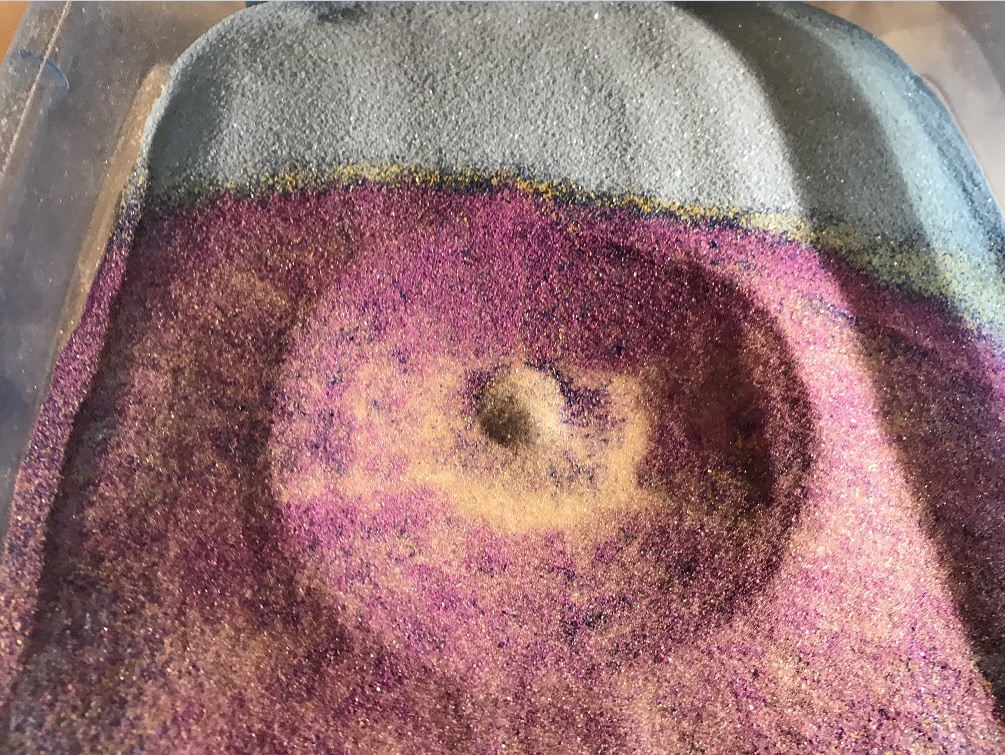
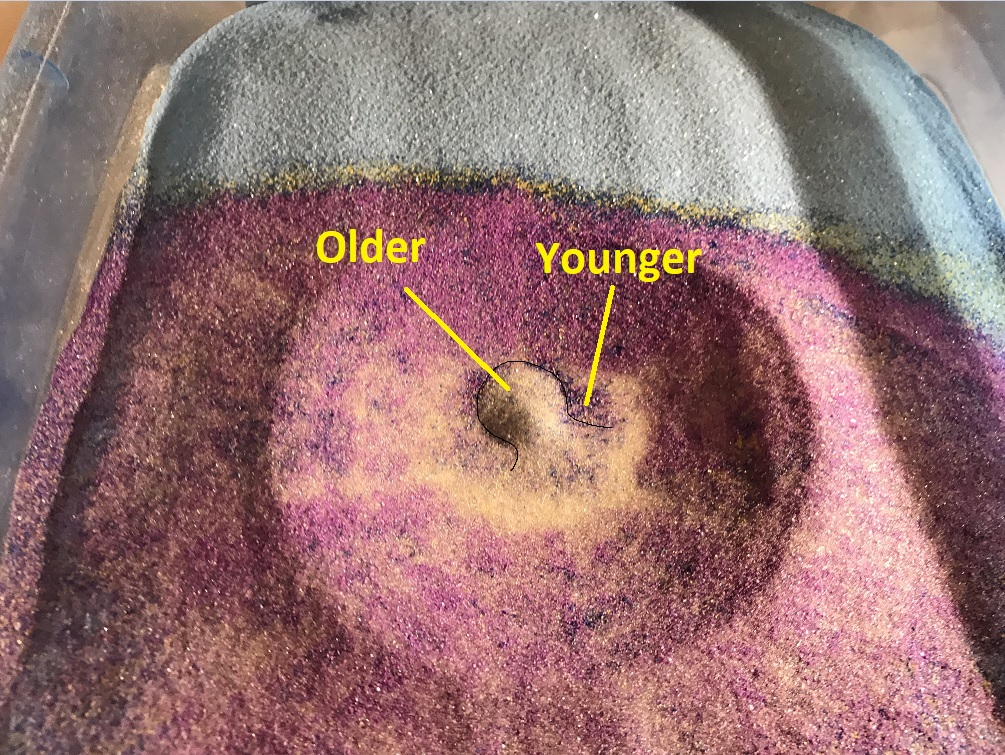
An extremely low-angle impact (20 degrees above horizon or so) produces the same style of response in the layer pack. In this case, however, the “splash” of material is directed back towards the low-angle origin of the shot, producing an elongated zone of material that does not rise noticeably above the crater floor. The older material drapes across younger layers that were tilted backwards towards the impactor’s origin.
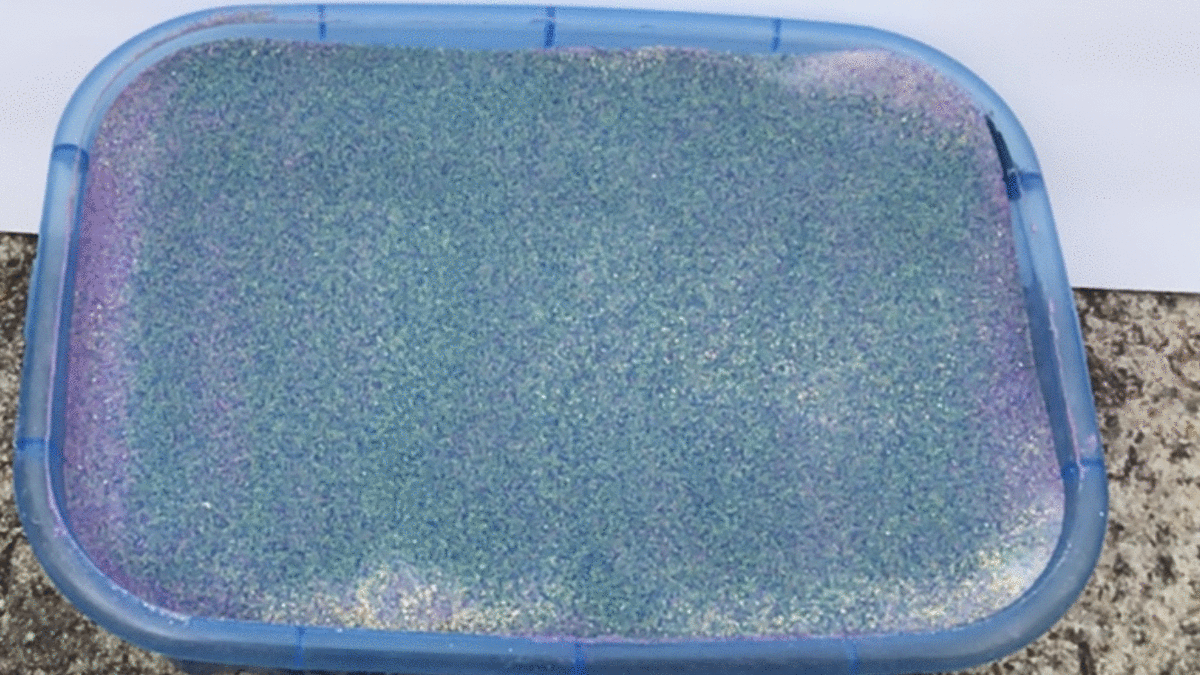
This crater was only faintly egg-shaped (see below), despite the angle of approach of the impactor and the hugely asymmetrical wave of ejecta.
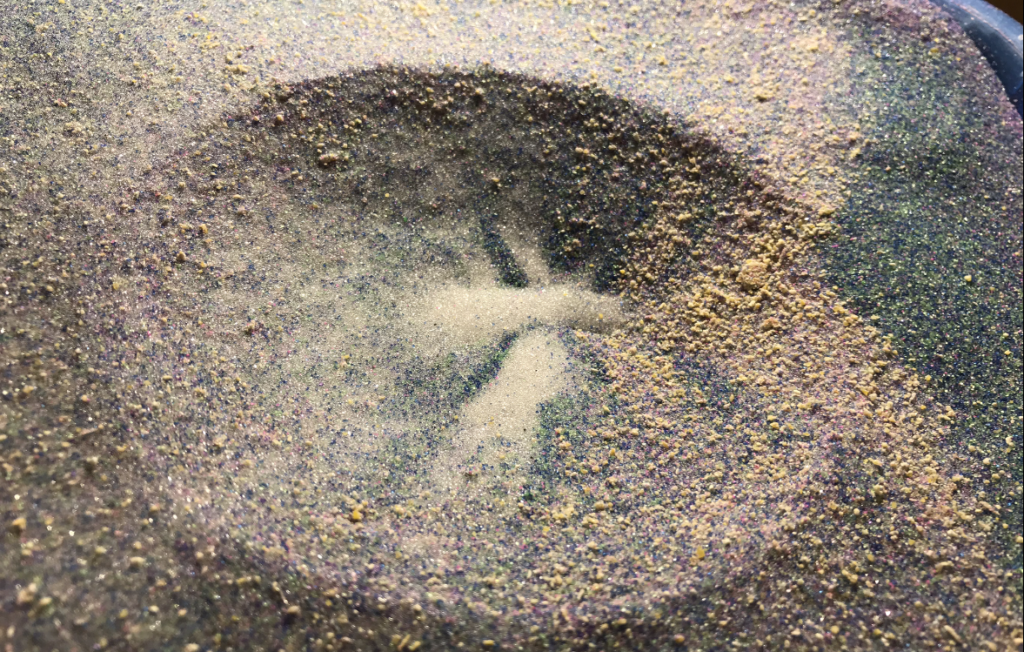
I gave these models a shot (pun intended) in response to a viewer comment on my YouTube page. The models were set up to produce the central peaks using a weak and non-cohesive material (the white microbeads), in contrast to the wet, highly cohesive sand suggested in the viewer comment. I selected and layered the materials (weak microbeads under stronger, more frictional sand) to produce the desired result. Presumably, the greater strength of the outer, more frictional sand layer focuses response of the disturbed material into the weaker microbeads, which respond dynamically due to their lower strength. Shooting a mechanically homogenous (all sand or all microbeads) material with the same impactor at the same velocity produces a crater with no central peak. The crater walls steadily slope towards the crater’s center, as seen below.
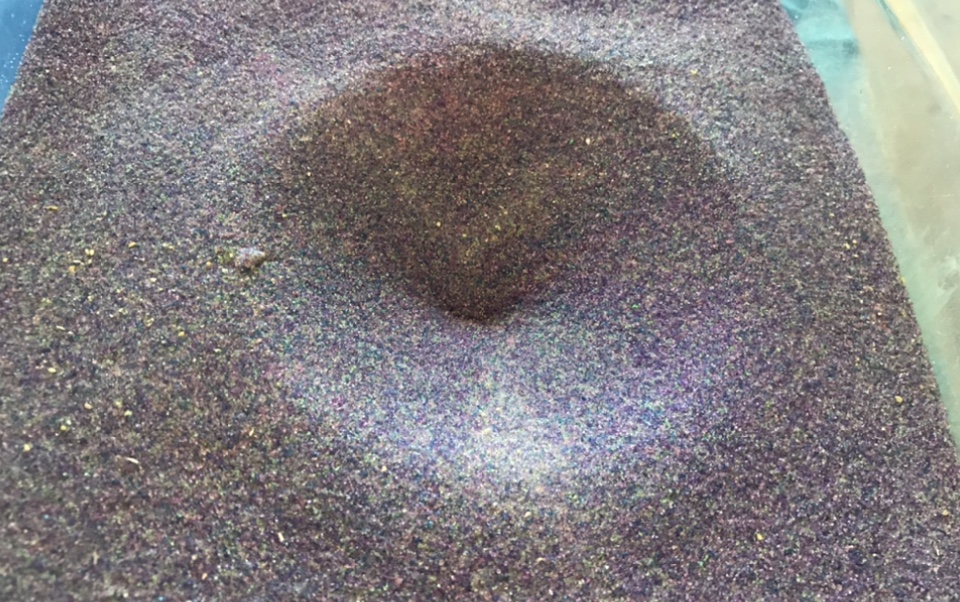
In any geologic model, assumptions have to be made and scaling issues will always be present, and these conceptual crater experiments are no exception. The microbeads are slightly less dense than the overlying sand (2.5 g/cc vs 2.65 g/cc), which is the reverse of density relationships that should be present on solid planetary bodies (relevant if the impact effects are sufficiently deep to cross material boundaries). The beads are also weaker than the overlying sand, in the sense that their round shape results in less bead-to-bead frictional coupling. In the real world, rock masses of comparable composition should be stronger with depth due to increasing confining lithostatic pressure, unless thermal or fluid pressure effects disrupt this relationship. Impactor velocity and behavior is also an issue, with the impactor’s intact survival of the impact and its speed (250-300 m/s or so) being questionably scaled. The models shown here do, however, generally represent a style of material movement that is thought to be the principal contributor to central peak formation. Elastic rebound of deeper horizons is also thought to be a component of central uplift in craters, but I do not think it is noticeably represented here.
Various approaches can be used to reproduce certain characteristics of impact craters, though no single method is perfect. Even simple experiments can still be usefully representative. High-velocity projectiles and minimally or non-cohesive sand are effective in producing large craters relative to projectile size, as well as for demonstrating the influence of impactor flight angle on crater shape. Even though the energy in the air rifle projectiles used here is modest compared to Gene Shoemaker’s rifle round, craters are still quite large relative to the impactor itself.
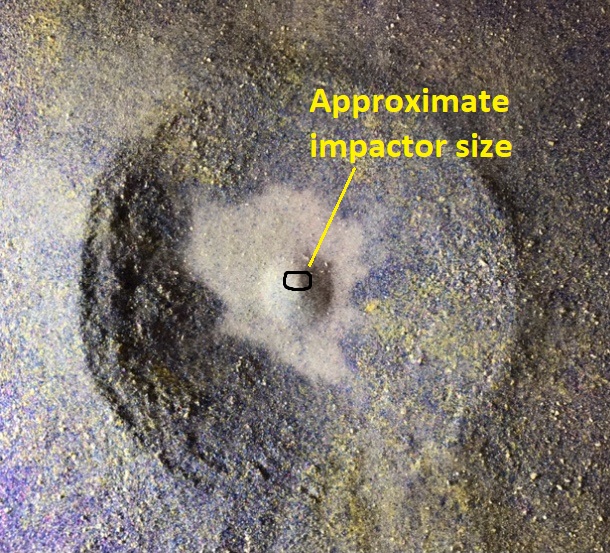
The model shown in this link uses a lower-energy, much larger impactor with a very detailed model setup to replicate ejecta ray patterns. The crater produced is not much larger than the impactor itself. The modeling approach here is entirely different, but it is still effective in proposing a mechanism for a distinct and well-represented detail of real craters.
Videos of the experiments shown in this post, along with a couple more, are available at the link below:

